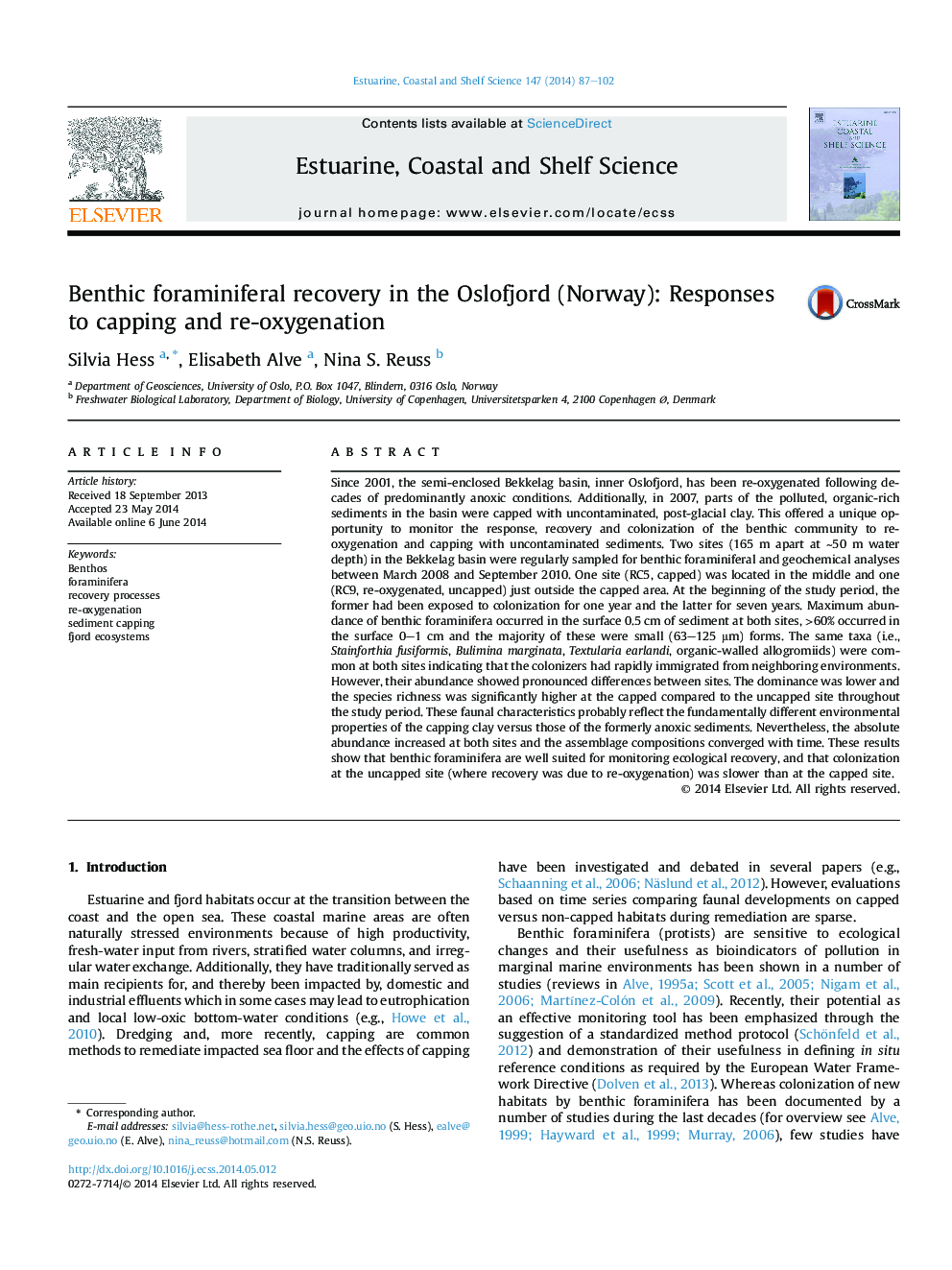| کد مقاله | کد نشریه | سال انتشار | مقاله انگلیسی | نسخه تمام متن |
|---|---|---|---|---|
| 6384939 | 1626649 | 2014 | 16 صفحه PDF | دانلود رایگان |

- Monitoring of benthic foraminiferal response to harbor remediation treatments.
- Foraminiferal recovery after re-oxygenation and capping of anoxic polluted sediments is discussed.
- The foraminiferal colonization at the capped site is faster than at the uncapped, formerly anoxic site.
- The dominance is lower and the species richness is higher at the capped than at the uncapped site.
- The benthic foraminiferal assemblage composition of the 2 sites is converging with time.
Since 2001, the semi-enclosed Bekkelag basin, inner Oslofjord, has been re-oxygenated following decades of predominantly anoxic conditions. Additionally, in 2007, parts of the polluted, organic-rich sediments in the basin were capped with uncontaminated, post-glacial clay. This offered a unique opportunity to monitor the response, recovery and colonization of the benthic community to re-oxygenation and capping with uncontaminated sediments. Two sites (165 m apart at â¼50 m water depth) in the Bekkelag basin were regularly sampled for benthic foraminiferal and geochemical analyses between March 2008 and September 2010. One site (RC5, capped) was located in the middle and one (RC9, re-oxygenated, uncapped) just outside the capped area. At the beginning of the study period, the former had been exposed to colonization for one year and the latter for seven years. Maximum abundance of benthic foraminifera occurred in the surface 0.5 cm of sediment at both sites, >60% occurred in the surface 0-1 cm and the majority of these were small (63-125 μm) forms. The same taxa (i.e., Stainforthia fusiformis, Bulimina marginata, Textularia earlandi, organic-walled allogromiids) were common at both sites indicating that the colonizers had rapidly immigrated from neighboring environments. However, their abundance showed pronounced differences between sites. The dominance was lower and the species richness was significantly higher at the capped compared to the uncapped site throughout the study period. These faunal characteristics probably reflect the fundamentally different environmental properties of the capping clay versus those of the formerly anoxic sediments. Nevertheless, the absolute abundance increased at both sites and the assemblage compositions converged with time. These results show that benthic foraminifera are well suited for monitoring ecological recovery, and that colonization at the uncapped site (where recovery was due to re-oxygenation) was slower than at the capped site.
Journal: Estuarine, Coastal and Shelf Science - Volume 147, 20 June 2014, Pages 87-102